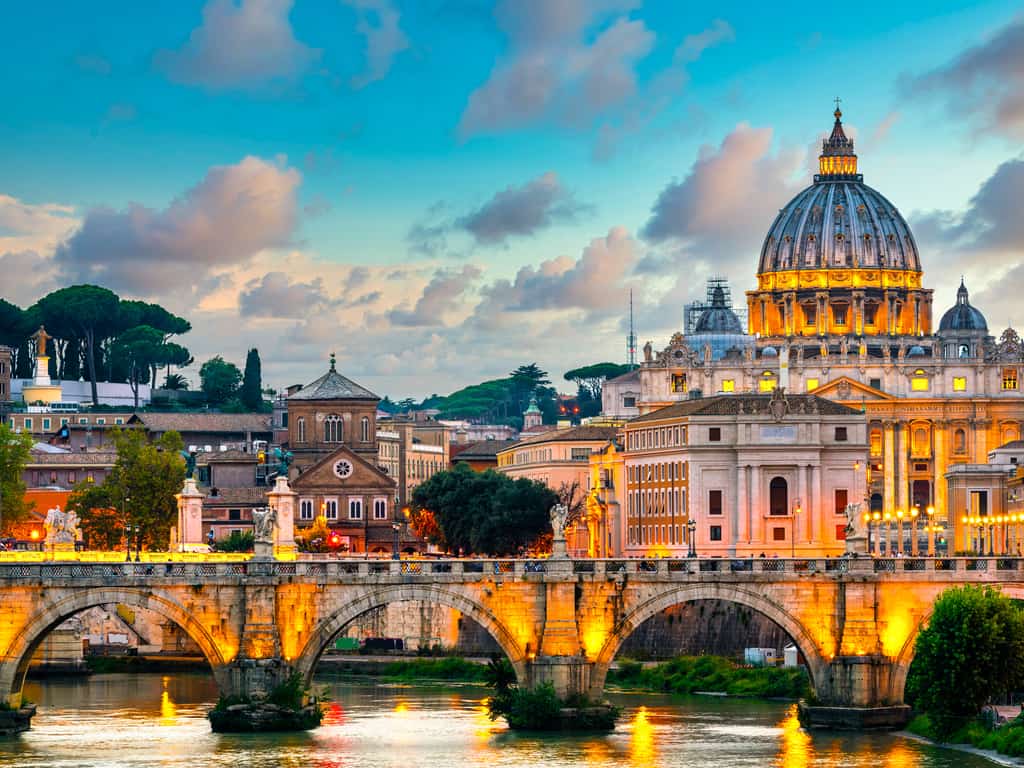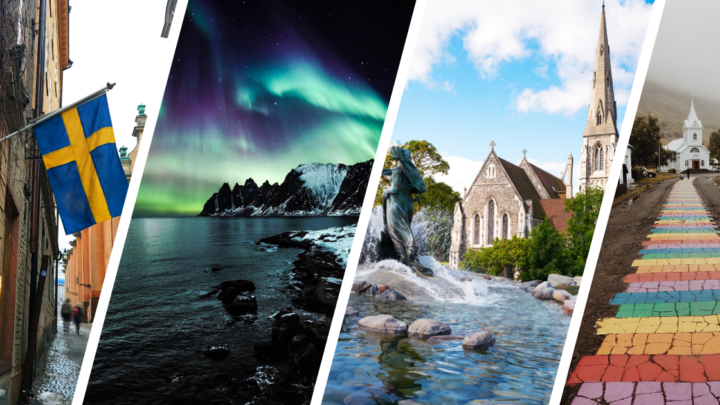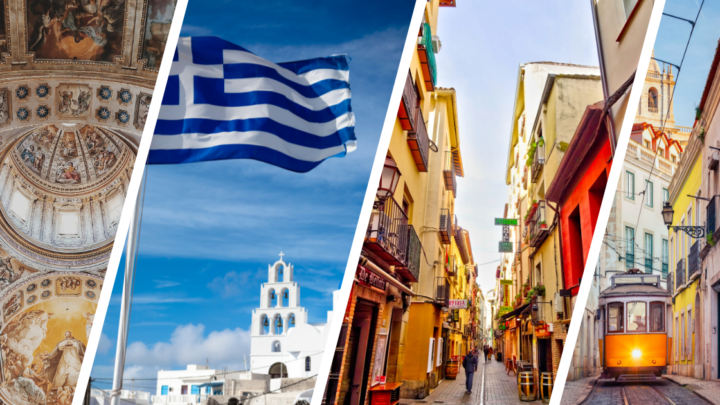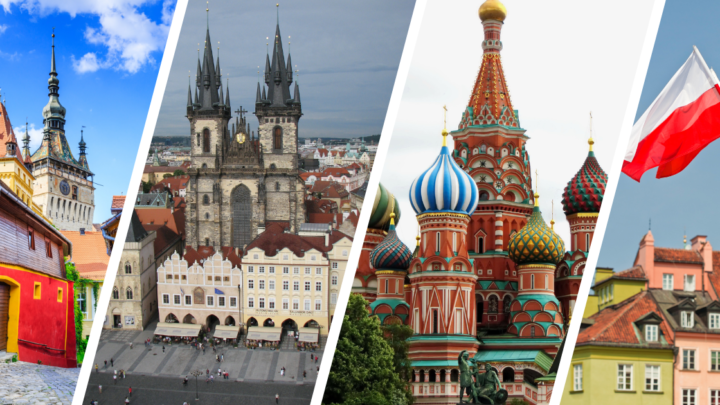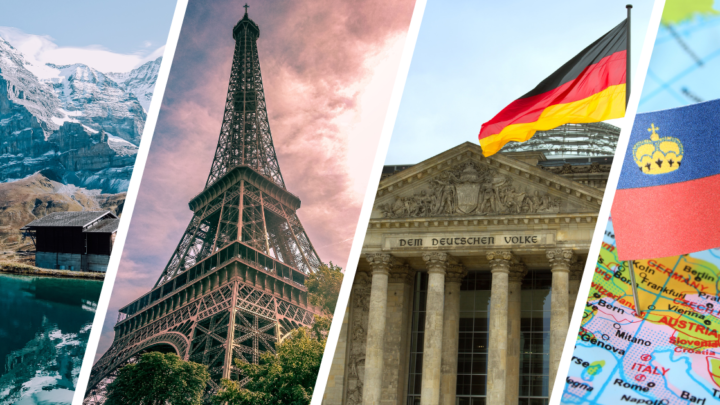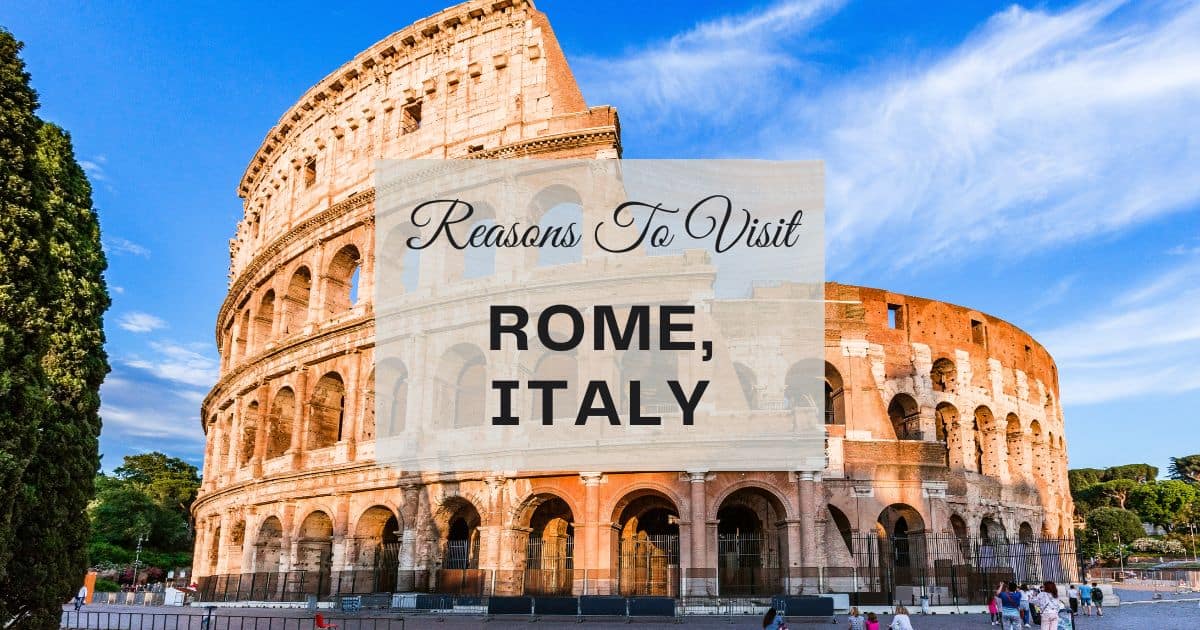Preparing to visit Rome, Italy? You are on the right page! Look at our recommended travel activities and attractions in Rome, Italy) to get the most out of your time there. Check out the list of the best things to do in Rome, Italy, and places to go in Rome, Italy, below. Wondrous Drifter is a Web 3 travel company that aspires to disrupt the travel industry.
Table Of Content
- The Colosseum
- Vatican City
- Pantheon
- Roman Forum
- Trevi Fountain
- Vittorio Emanuele II Monument
- Centro Storico
- Santa Maria Maggiore
- Piazza Navona
- Piazza del Popolo & Santa Maria del Popolo
- Palatine Hill
- Villa Borghese Gallery and Gardens
- Castel Sant’Angelo National Museum
- Capitoline Museum
- Baths of Caracalla
- San Giovanni in Laterano
- Catacombs and Via Appia Antica
- Palazzo Doria Pamphilj
- Church of San Clemente
- Baths of Diocletian National Museum
- Explore Europe
The Colosseum
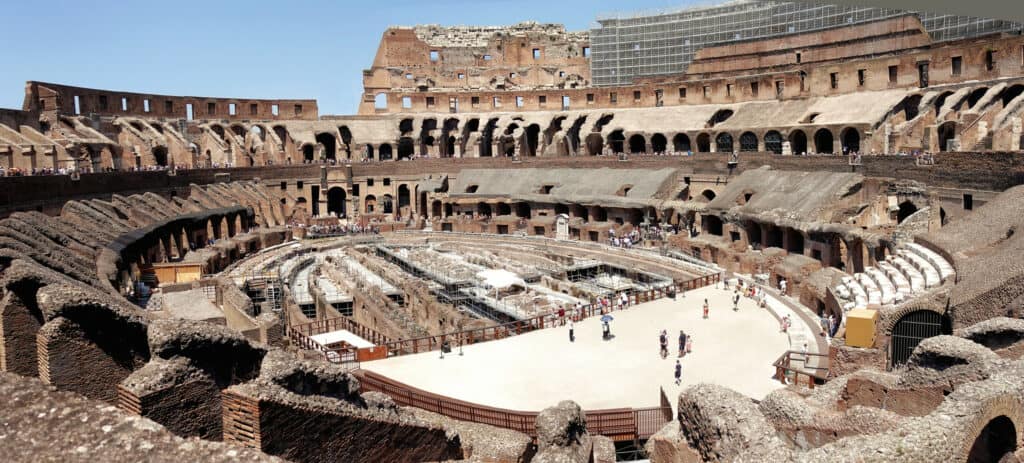
The Colosseum is Rome’s most recognizable landmark. Imposing and about 2,000 years old, it will transport you back to ancient Rome and the manner of life there.
The Flavian Amphitheatre’s silhouette is Rome’s equivalent of Paris’s Eiffel Tower. Roman antiquity’s most remarkable architectural legacy is still used as a model for modern sports venues. The Colosseum serves as an excellent example.
It was started by Vespasian in AD 72, expanded by Titus, and reopened in AD 80 with a series of great games as a tribute to his father.
Also, High-ranking members of the Imperial Court looked on from the Colosseum’s lowest tier.
At the same time, aristocratic Roman families sat atop it, and the general public sat on the 3rd and 4th levels.
The Colosseum in Rome served as a venue for gladiatorial combat, often including large animals like elephants and tigers, to amuse the public and boost the emperor’s reputation.
It is recommended that you reserve your Colosseum tickets early to enjoy a more leisurely visit.
Vatican City
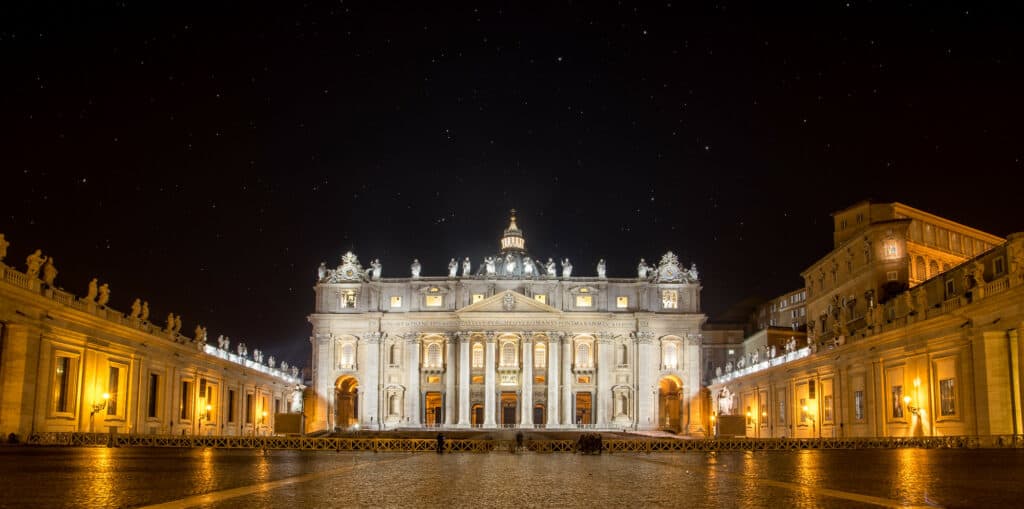
There are a lot of restrictions on what may and cannot be done within the Vatican’s borders. One square kilometer is all that’s required to get there by car.
The Pope, the leader of the Roman Catholic Church, has control over the Vatican Palace, St. Peter’s Basilica, and St. Peter’s Square.
This little community has a lot to give visitors, from its museums to its massive church.
St. Peter’s Basilica houses Michelangelo’s masterpiece, Pieta, and also other masterpieces by Bernini and others.
Vatican museums are most known for its Sistine Chapel, Michelangelo’s most famous work.
You’ll find a variety of museums and art galleries at the Vatican Palace and the Raphael Rooms and the Borgia Apartments, the Vatican Library, and several other galleries and museums. These include everything from papal carriages to the religious art of the twentieth century.
The Vatican’s most famous sites have massive lineups, and visitors may expect to spend several hours in line. Pre-purchase a Skip the Line: Upgrade tour to avoid long waits in line.
Pantheon
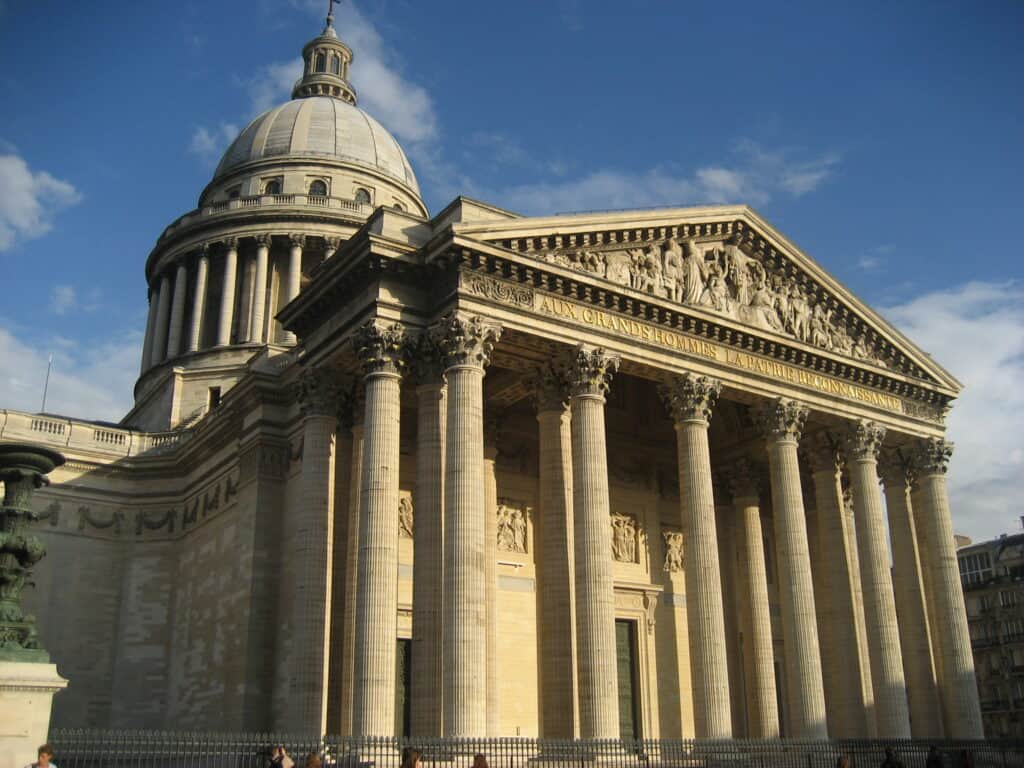
The Pantheon, one of Rome’s most recognized ancient landmarks, can be found in the city’s Colosseum region. In 27 BC, Marcus Agrippa gave the order to commence construction of Rome’s Pantheon.
It has mostly stayed unchanged from Rome’s time.
After a fire in AD 80, the Pantheon was reconstructed, and the stonework that resulted shows just how skilled Roman builders were.
The foundations conceal a nine-meter-deep gateway in the Roman inner structure’s 43-meter-tall dome.
The uniformity of the interior’s height and circumference contributes to its visual appeal.
As a result of Pope Bonifacius IV’s dedication of the pagan temple to the Virgin Mary and all Christian martyrs in the year of the year 60.
It has been used as the final resting place for several Italian royalties, including Raphael and notable Italians.
Roman Forum
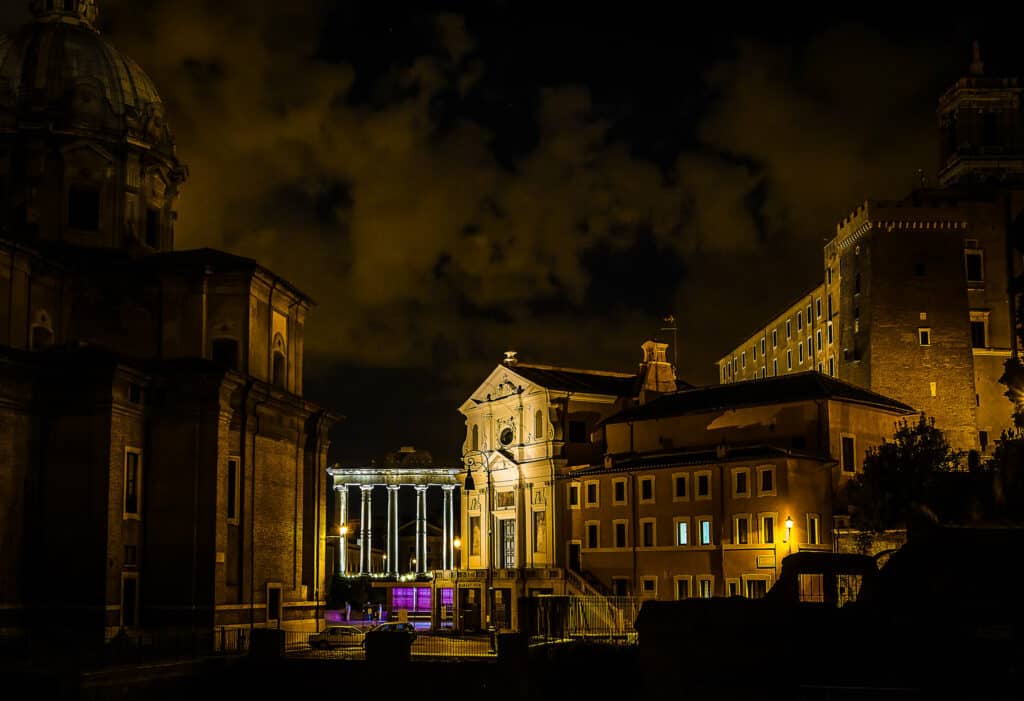
Wandering through a modern metropolis’s central forum transports you back to ancient Rome, nearly two millennia ago.
For all their decay and dereliction, the remains of the Forum’s columns and triumphal arches nonetheless create a lasting impact on visitors.
Not least because Rome’s Forum was a mirror of the Roman world for many years previous to its creation.
In ancient Rome, most political and religious events occurred in open areas like courts, marketplaces, and other public gathering spots.
Moreover, the city’s ancient constructions began to disintegrate in the seventh century, so churches and fortresses were built on top of the remains.
At that time, no systematic excavations were conducted out on these old structures, which had been hidden under 10 meters (32ft) of earth and rubble.
Trevi Fountain
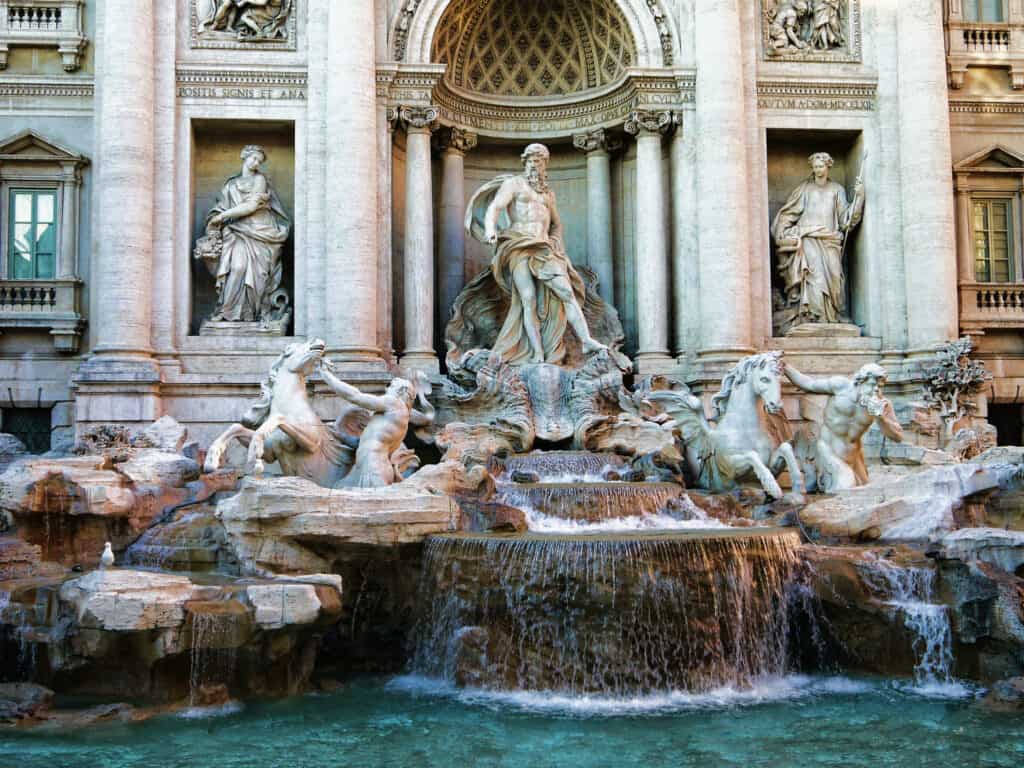
In films, this 17th-century masterpiece has been saved for all eternity.
As a matter of fact, it has become one of the city’s most popular tourist attractions.
A penny thrown into the Trevi Fountain is said to bring good luck.
However, tossing three coins into a fountain isn’t recommended. It might just give an opposite effect!
There is no better fountain in Rome than the Fontana di Treviso. Aqueducts erected by Agrippa, the famed art patron of the first century, furnish the city’s water.
Clement XII hired Nicol Salvi to design and build the fountain that sat towards the back wall of the mansion of the Dukes of Poli between 1732 and 1751.
There are also tritons and shells seen in this image of Neptune, the sea deity Oceanus.
Figurines and fake pebbles are swum in water and kept in motion. It all ends up in a large basin that is constantly replenished with money.
Vittorio Emanuele II Monument
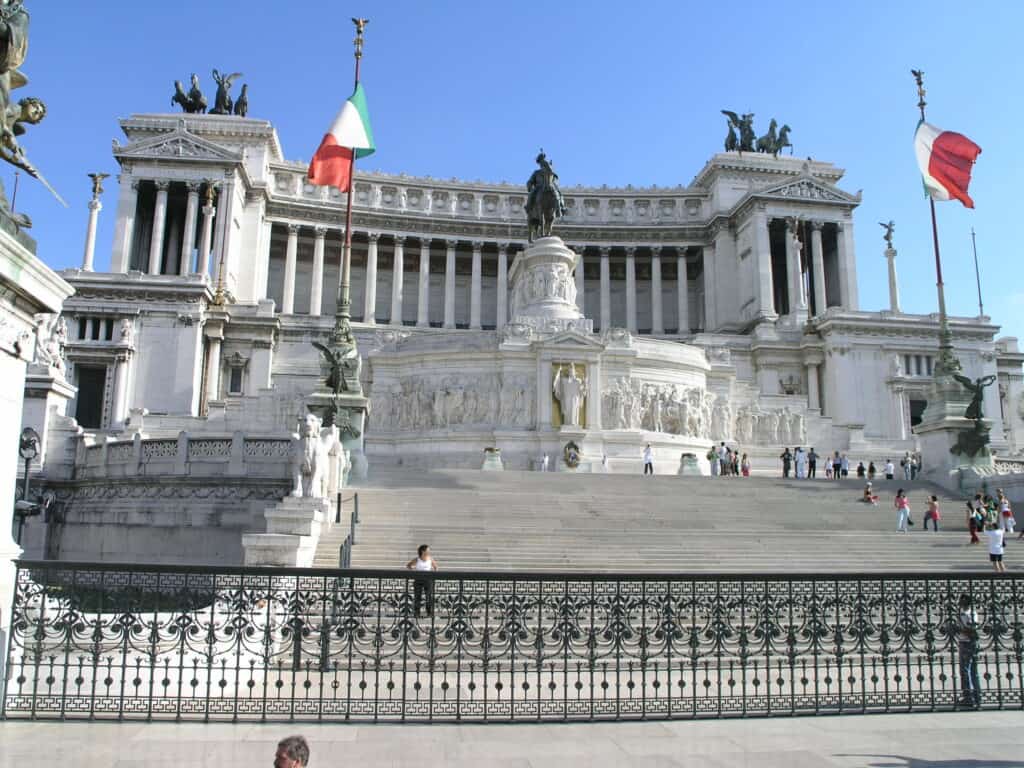
It’s paradoxical that the city’s residents rarely love this national icon of Italy, which Romans liken to a wedding cake or a gigantic typewriter.
Monument to Victor Emmanuel II, the first Italian king, was built to mark the country’s unification. It’s stunning, made of pure white marble, and worth a trip just to see it. The top of the monument has a breathtaking view of the city from above. It also offers awe-inspiring city vistas.
On the Capitoline Hill overlooking Piazza Venezia, the old city of Rome is symbolized by an enormous neoclassical building.
The statue of King Vittorio Emanuele II, the first king of unified Italy, was erected between 1885 and 1935 as a tribute to the monarch.
The grave of the nameless soldier and a museum dedicated to the Italian unification is located here. An elevator will take you to the uppermost terrace, where you’ll be able to take in the cityscape from every angle.
Address: Piazza Venezia, Rome
Centro Storico
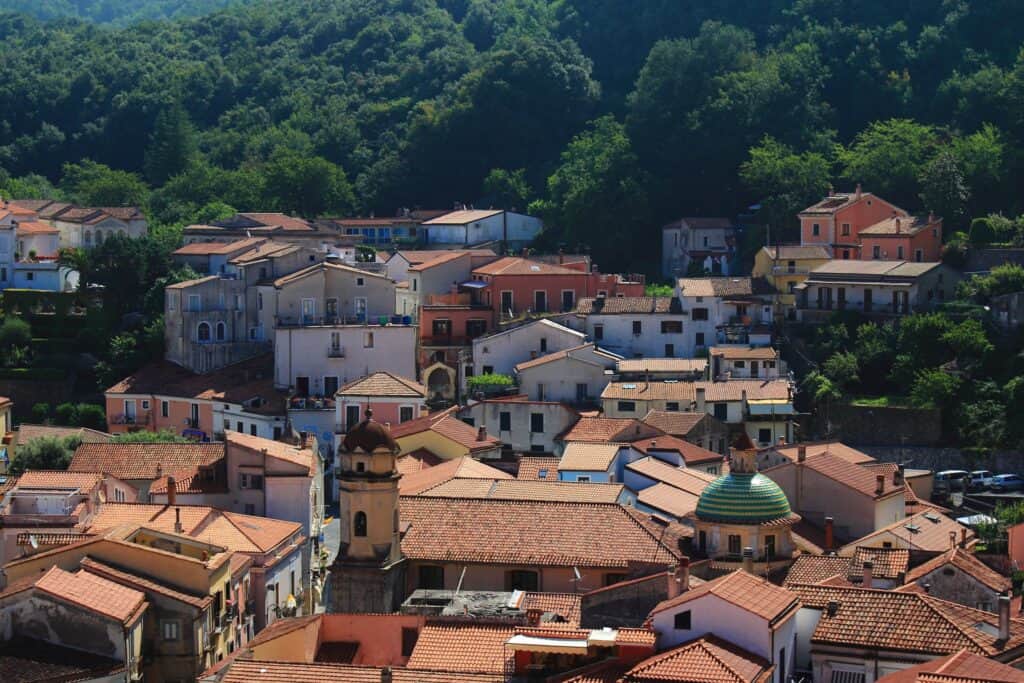
You didn’t actually understand the street names on the tourist map area of Rome since there are so many things to do there.
Explore its old alleys and passageways for the whole vacation in Rome’s historic center, and you’ll see why this is one of the most popular destinations in the city of eternal spring.
The historic core of Rome is a maze of cobblestone alleyways, Renaissance palaces, ancient ruins, and baroque public squares. It’s a magnificent chance to visit!
Moreover, shops, cafes, trattorias, and fashionable bars line its winding streets.
You’ll find all sorts of market vendors and street performers populating its lively public squares.
Avoid hurrying from one must-see sight to the next and instead, take in the neighborhood’s scenery.
While in Rome, take time to see lesser-known churches, including Santa Maria del Popolo, home to artwork by Bernini and Caravaggio, as well as the Piazza Navona, the Trevi Fountain, and the Basilica of Santa Maria Maggiore.
Address: Piazza di Spagna, Rome
Santa Maria Maggiore
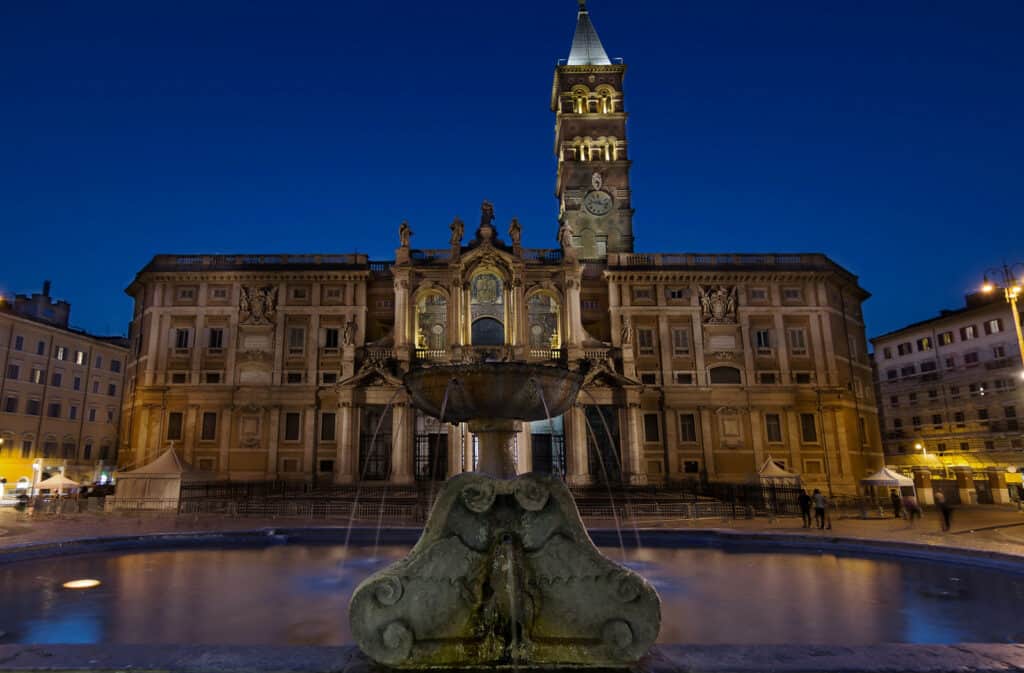
Pope Liberius built Rome’s most splendid cathedral, Santa Maria Maggiore, on this location in the 4th century after a revelation of the Virgin Mary instructing him to do so.
Even though it was August, snow fell the next day, and the enormous basilica was completed on Esquiline hill.
The mass has been celebrated since the 5th century. When it was built around 1250 in Rome, it had mosaics representing scenes both from the Old and New Testament that were sculpted by some of Rome’s most talented mosaic artists.
For forty columns built from marble and four from granite, the 86-meter chamber is split into three sections.
The upper walls are decorated with Roman mosaics dating back to the fourth century. At the same time, the floor is inlaid with colorful stone in the style of Lake Como region artists from the 12th century.
The coffered ceiling of this room is adorned with the first gold to arrive in Italy from the Americas.
In addition to being an important pilgrimage place for Catholics, this basilica is among the four Vatican basilicas in Rome.
Address: Piazza di Santa Maria Maggiore, Rome
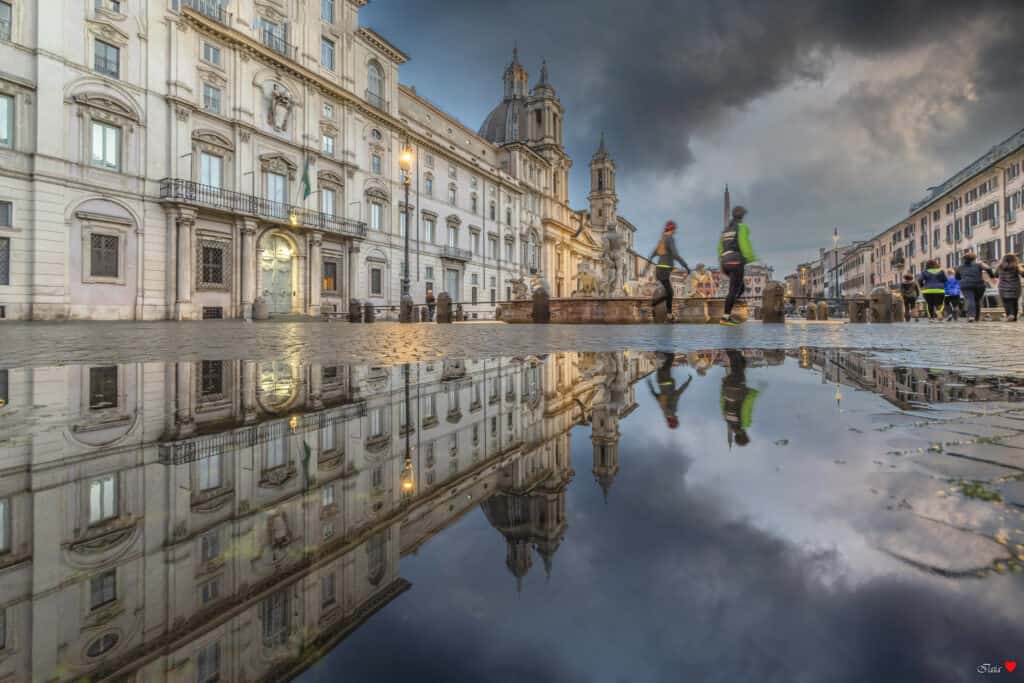
Navona, one of Rome’s best-known baroque squares, still retains the form of Emperor Domitian’s Roman stadium. On its west side, Borromini, who also planned the splendid line of palaces and the cathedral of Sant’Agnese, renovated it in the Baroque style throughout the Middle Ages.
There are several concave-to-convex elements in the building’s exterior and campanile and an ornate dome that all work together to create a cohesive Baroque aesthetic.
Besides Algardi’s 1653 The Miracle of St. Agnes, the crypt of Sant’Agnese also has fragments of a Roman mosaic floor. A model for Baroque and Rococo cathedrals in Italy and internationally, Sant’Agnese served as an inspiration.
Nearby eateries and street performers such as painters and musicians help to create a vibrant ambiance.
Despite its undeniable architectural and historical merits, this is a lovely spot for most people to relax, enjoy a drink or a meal from one of the various restaurants surrounding the piazza, and watch the world go by.
Piazza del Popolo & Santa Maria del Popolo
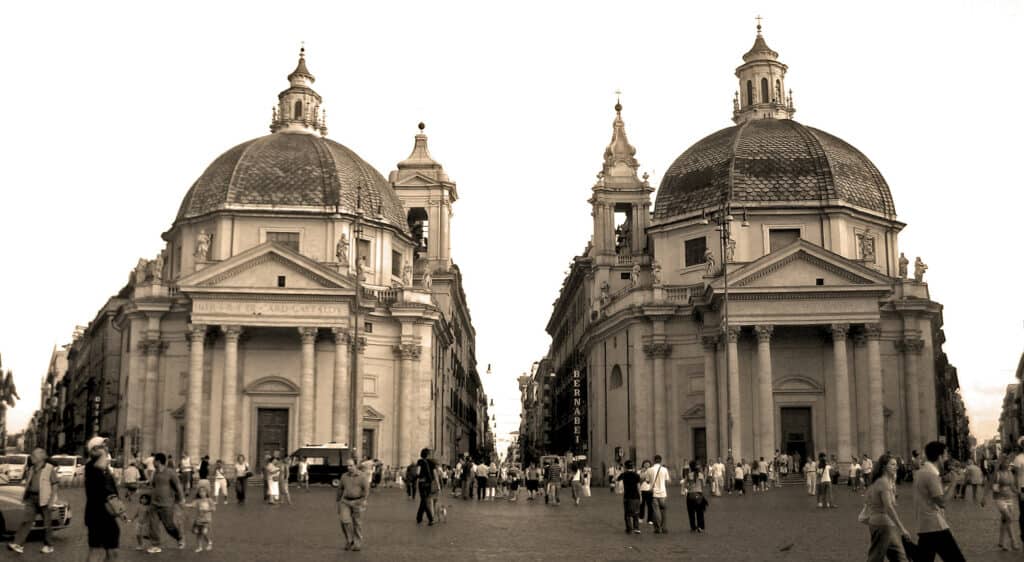
Rome’s Piazza del Popolo is a well-known tourist destination. Even though the name translates to “People’s Square” in Italian, the poplar trees that ringed the circular plaza inspired the name. The neo-classical square was initially intended to welcome tourists and pilgrims entering Rome from the north through the Via Flaminia, which was constructed between 1811 and 1822.
Piazza del Popolo, the northern gateway to Rome’s historic center, was built in the early nineteenth century to be symmetrically positioned at the apex of a triangle formed by Via Corso, the city’s most important retail thoroughfare.
Four white marble lions in the middle of the fountain shoot water fans into four travertine spheres.
Twin churches of Santa Maria in Montesanto and Santa Maria in Montesanto face one another on either side of Via Coorso. At the same time, the Augustinian Basilica of Santa Maria del Popolo is on the other side of the vast square.
Travel is the healthiest addiction. Go travel as there is so much to see in the world. Use this travel the world travel guide to explore all the countries! When you roam around the world, you have to visit the USA. Thanks to the multicultural heritage, cuisine from all around the world are offered here in the US. You have to check out the best states to visit in USA.
Palatine Hill
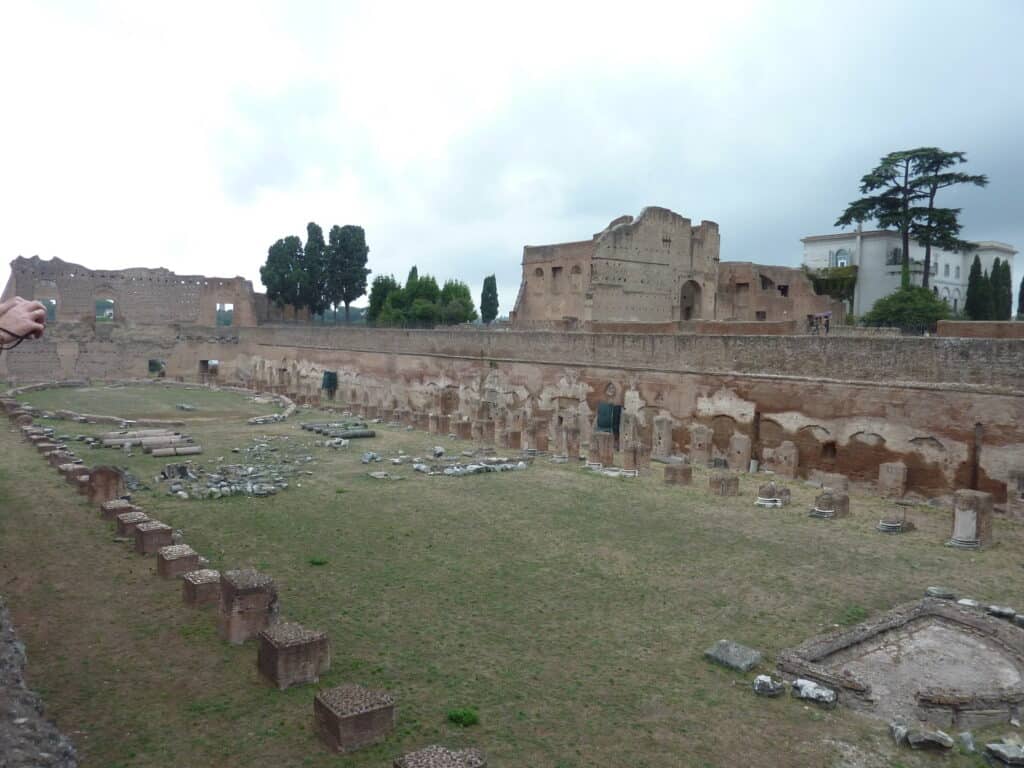
It’s safe to say that the Palatine is also a verdant haven. A rabbit could be seen scampering over the slope as you walk amid the ruins, which are home to many wildflowers.
The Farnese Gardens are a great place to bring a picnic or find some shade.
The Palatine is pretty quiet during peak tourist season, making it a nice spot to get away from the bustle.
Rock cuttings uncovered fronting the Temple of Cybele demonstrates human activity dating back to the ninth century BC, making Palatine Hill Rome’s oldest habitation.
Later, the well-known emperors and other powerful aristocratic families decided to build their palaces here.
Augustus’ wife Livia’s house, a semi-subterranean passageway, is a notable attraction on Palatine Hill.
The Baths of Septimius Severus are the most impressive attraction on the hill.
In addition to its beautiful park, Palatine Hill is also home to some of Rome’s most stunning and remarkable ruins.
Villa Borghese Gallery and Gardens
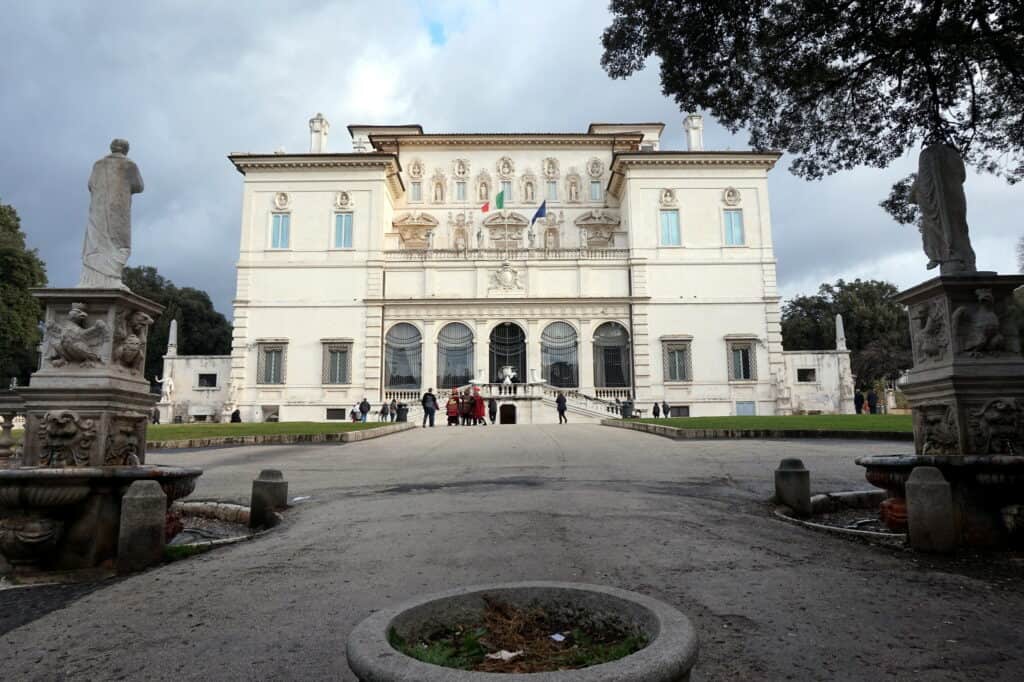
The Borghese Gardens are a favorite gathering place for runners of varying skill levels and experience.
A jog or run may be enjoyed to their full potential on the park’s many miles of well-maintained, traffic-free roads.
It is not uncommon to witness groups of individuals working out together in the park, making use of the big grassy spaces, the shade provided by numerous trees, and the huge amount of water that is distributed freely from Rome’s many little fountains.
The park is laid out as an English landscape garden, complete with roads for strolling and ponds for rowing. Renting a bicycle or a horse-drawn carriage is another option for exploring the area.
Naturalistic enclosures and an interconnected tiny path make Bioparco di Roma one of the most popular attractions in Rome. Playgrounds, pony rides on weekends, and puppet performances are just a few kid-friendly activities at the park.
Address: Piazzale del Museo Borghese, 5
Castel Sant’Angelo National Museum
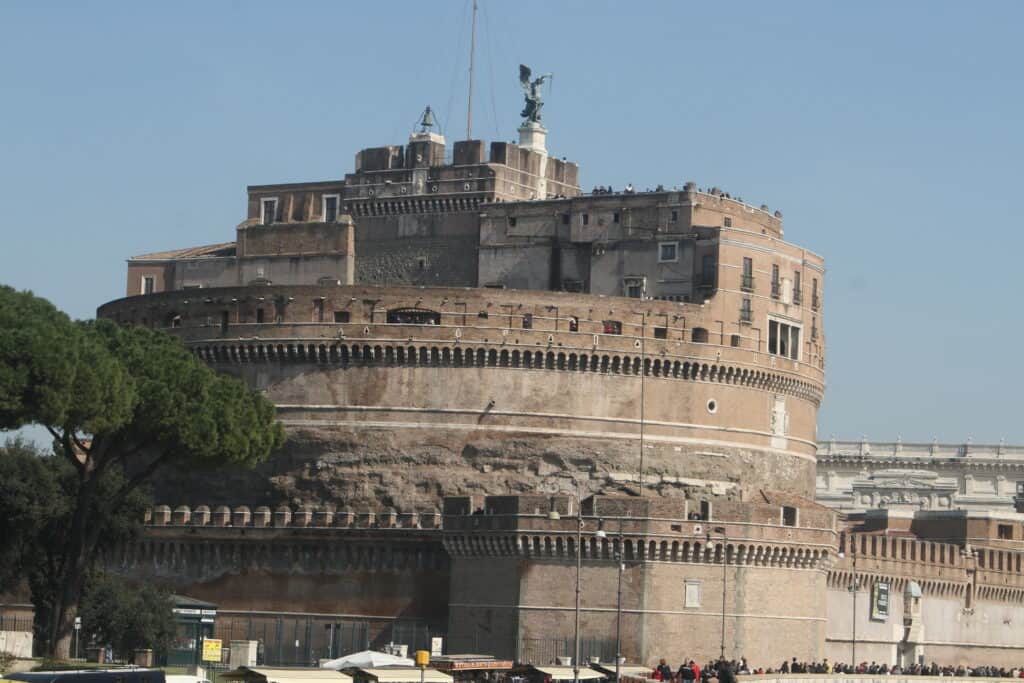
Castello Sant’Angelo, a large drum-shaped building encompassing the Tiber near the Vatican, was first built in AD 135 as a tomb for Emperor Hadrian and his immediate family.
Over the centuries, Castel Sant’Angelo has served as a papal palace and a fortified stronghold, and more recently, as a museum.
In AD 271, Emperor Aurelian made use of its northern location to include it within the city’s new defenses.
By the Medieval Era, it had become a powerful fortress capable of resisting barbarian invasions.
The Passetto di Borgo, a high tunnel, has been utilized by Papal exiles to escape danger and store their most essential belongings in the castle’s cellars.
A pedestrian bridge ornamented with Bernini angel statues leads up to the castle. The five floors of the castle are accessible by a spiral staircase.
Among its numerous storeys are prison cells, a large collection of weapons, and Renaissance-styled papal apartments.
The balcony at the summit offers lovely city views.
Address: Lungotevere Castello 50, Rome
Capitoline Museum
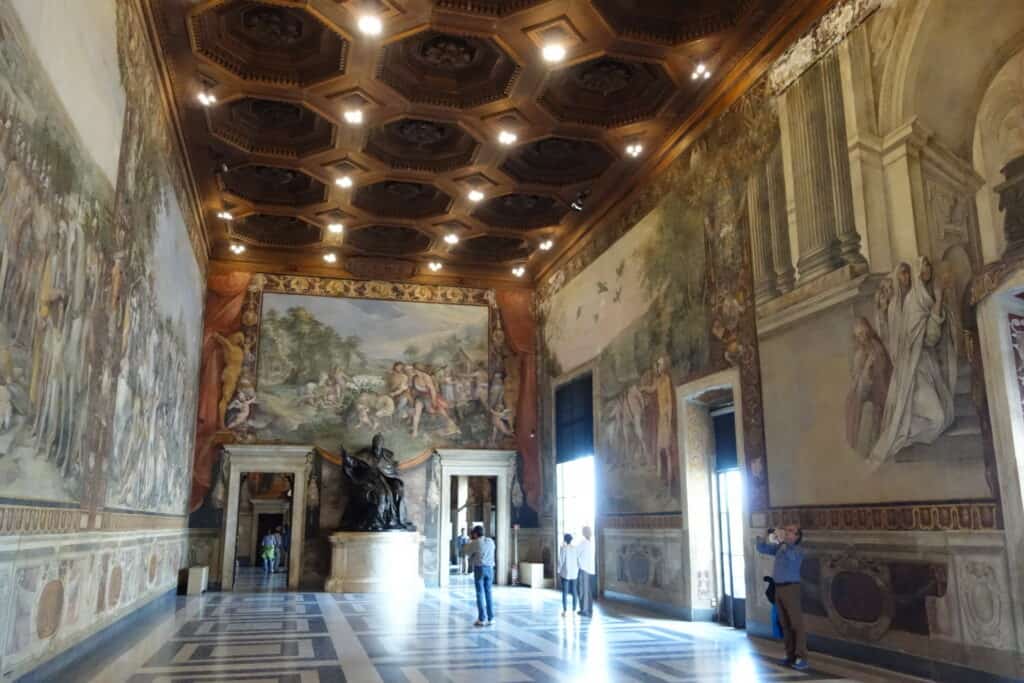
The Capitoline Museum, as its name suggests, is situated on one of Rome’s seven hills. When Pope Sixtus IV presented a set of highly significant bronze statues to the people of Rome in 1471, the Capitoline Museums were born. The majority of the exhibits at the museum’s galleries are from the city of Rome, including its vast collection of sculptures, paintings, and other artifacts.
The Capitoline Museums of Rome, commonly known as “Musei Capitolini,” are a group of museums housed in the structures of the Palazzo dei Conservatori and Palazzo Nuevo at Piazza del Campidoglio (built by Michelangelo). A passageway connects the two structures on the ground level.
The oldest public art collection in Europe, inaugurated in 1471, is housed in two buildings on Piazza del Campidoglio. This collection is primarily devoted to ancient sculptures from around the world.
Some of its most notable pieces include the realistic Hellenistic bronze Boy with a Thorn, the Capitoline Venus, the Roman equestrian statue of Marcus Aurelius, and the Capitoline She-Wolf, an Etruscan work from around 600 BC.
A Medusa head by 17th-century Baroque sculptor Gian Lorenzo Bernini is among the more “contemporary” sculptures on display.
Address: Piazza del Campidoglio, Rome
Baths of Caracalla
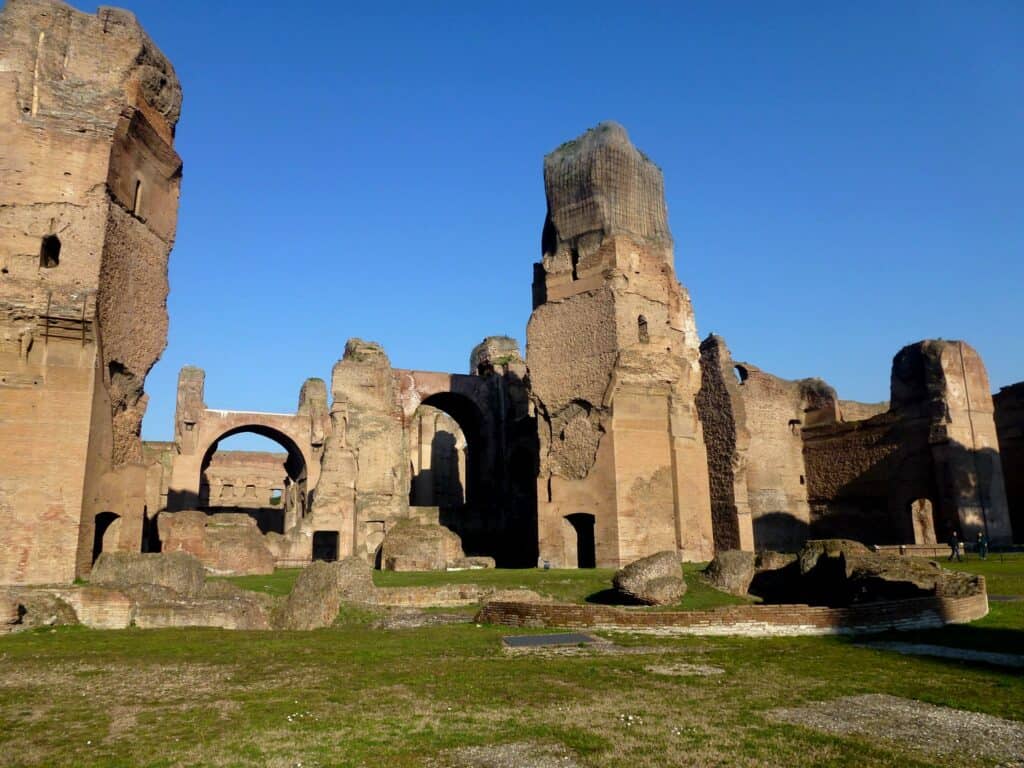
Caracalla’s public baths, completed in 216, were far more than that. In addition to dry and steam saunas, hot and cold baths, swimming pools, gyms, other recreational facilities, community rooms, open spaces, libraries, hair salons, and other retail establishments.
The complex of enormous rooms with domes and vaulting supported by large columns and a pier spanned an area of 300 square meters.
A maximum capacity of 1,500 persons may be accommodated at any given moment. Even in ruins, the beauty of the mosaics, marbles, and paintings that decorated the walls and floors may still be seen.
As one of the largest ancient thermae complexes, Caracalla’s Baths are the best example of outstanding Roman bathing facilities.
Strong walls, pristine preservation, and cutting-edge virtual technology will enthrall you.
The Soprintendenza Speciale of Rome and CoopCulture have teamed up on an intriguing initiative that allows visitors to don a visor and experience the ambiance of the Roman Baths as they would have roughly 2,000 years ago.
A visit to the Caracalla Baths is an unforgettable experience. Embrace the tranquility of this 2,000-year-old center for recreation and education.
Address: Via delle Terme di Caracalla 52, Rome
San Giovanni in Laterano
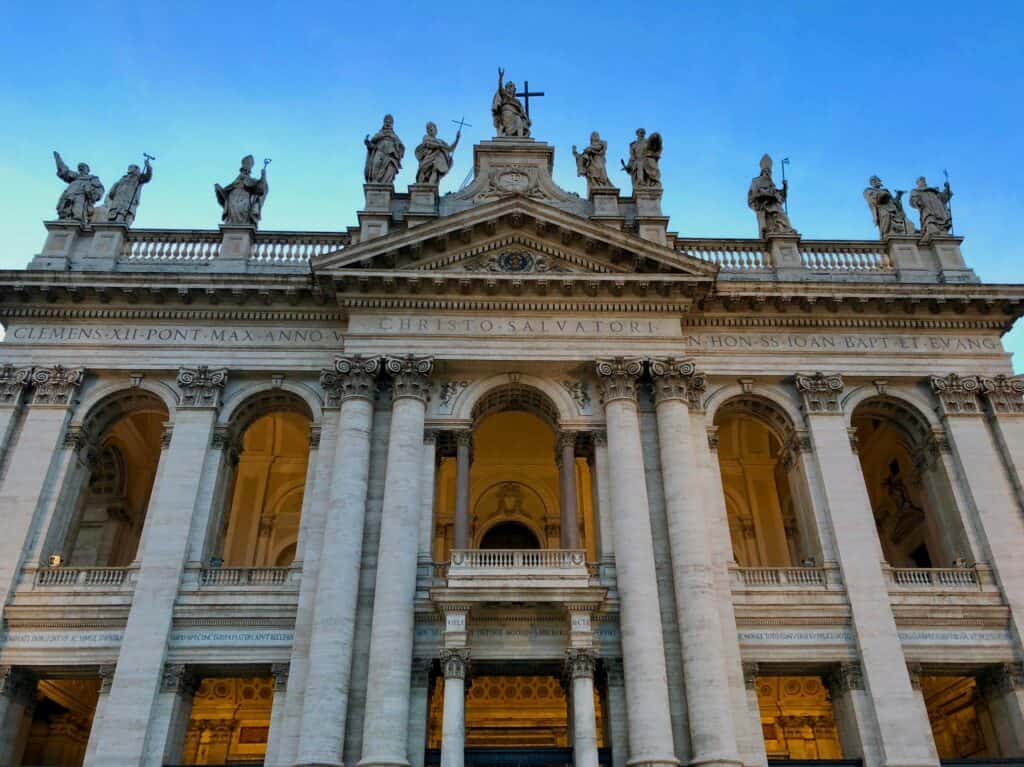
When it comes to Rome’s most stunning churches, St. John Lateran is no exception. It retains much of its original appearance a century and a half after it was first constructed.
However, the building’s exterior is a stunning example of Baroque architecture. In addition to the mosaics in the apse, have a look at the lovely 16th-century oak ceiling. The San Giovanni in Fonte baptistery may appear familiar to you because it served as a model for other octagonal baptisteries built around Europe.
As of the present, Constantine’s baptistery is the oldest Christian baptistery on the planet.
There are 28 steps in the Holy Staircase, located in the Scala Santa church across the square, which is said to have been transported to Rome by St. Helen from Pilate’s castle in Jerusalem in the fourth century.
The Cathedral of Rome is an absolute must-see among Rome’s most stunning religious structures. San Clemente and Santa Maria della Concezione dei Cappuccini are two other places recommended to be seen while in Italy.
Catacombs and Via Appia Antica
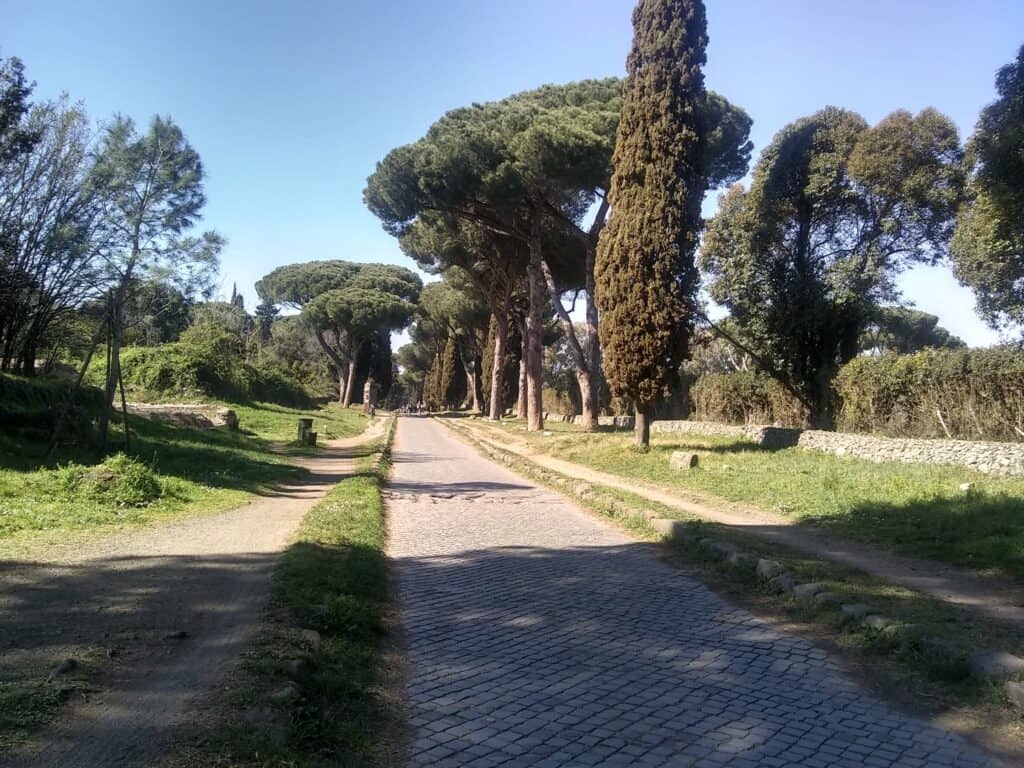
The Appia Antica Regional Park preserves the region’s distinctive scenery and archaeologically significant sites.
Located beneath the Via Appia Antica, the Catacombs of San Callista and San Sebastiano have enormous corridors, and chambers cut into the soft tufa. San Callista has an area of 300 by 400 meters.
On St. Calixtus, you’ll also find six more chapels dedicated to other sacraments, all of which date back to the early 3rd century.
According to Greek inscriptions, the Papal Crypt is home to most of the third-century murdered Popes as one of Rome’s seven pilgrimage churches, the church of San Sebastiano was erected in the fourth century on the site of an ancient cemetery and catacombs that may be explored.
Many people’s tombs may be seen along the route. Catacombs, Calixtus, Sebastian, and Domitilla, can be visited. The Vigna Randanini’s Jewish catacombs, which may only be seen with a reservation in advance, are a particular treat.
Address: Via Appia Antica, Rome
Palazzo Doria Pamphilj
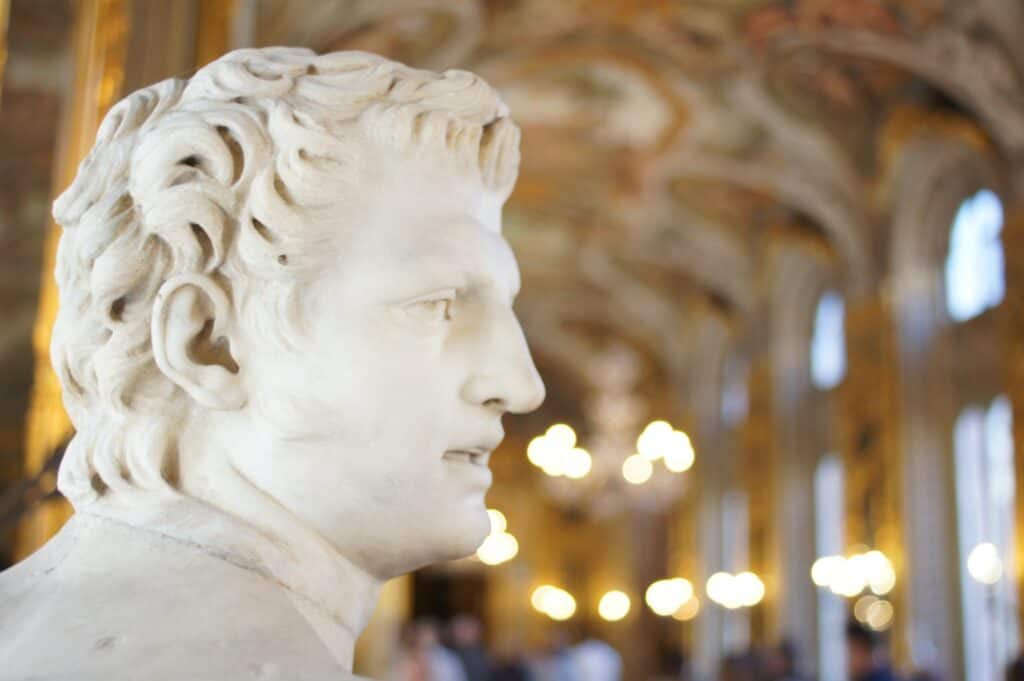
The magnificent Baroque halls, staterooms, and chapel of Palazzo Doria Pamphilj are home to Rome’s most impressive private art collections, including some of Rome’s most important works.
The collections include paintings by artists such as Filippo Lippi, Brueghel the Elder, Correggio, and Raphael, and major works by Caravaggio (Rest in the Flight into Egypt) and Titian. The results in these collections date from the 15th to the 18th centuries and represent the work of European masters during that time period (Salome with the Head of John the Baptist).
The collection includes several notable works, including Velázquez’s Portrait of Innocent X, one of the highlights. Bernini created a sculpture of the same Pope, which is an additional representation of him.
The castle itself nearly outshines its contents with its frescoed ceilings and Baroque ornamentation; a competent audio guide in English makes the visit more enjoyable. The grounds are exquisite, and they have a meticulously designed parterre and incorporate aspects of a labyrinth.
Address: Via del Corso 305, Rome
Church of San Clemente
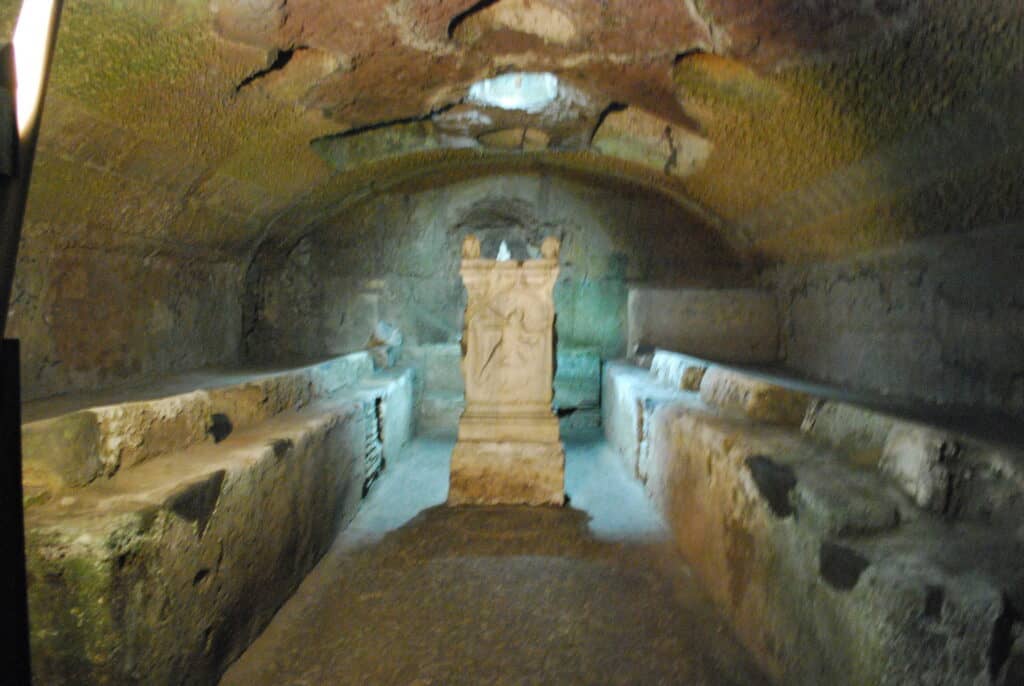
San Clemente is not only one of the oldest churches in Rome but also has the most exquisitely decorated apse in the city. It is covered in mosaics of scenes from both the Old and New Testaments. In addition, San Clemente is fascinating because it has multiple layers of history, with each era building upon the one before it.
From the church built in the 12th century, you may enter an earlier basilica built in the 4th century, which features Romanesque murals depicting New Testament subjects.
Below that are the foundations that have been unearthed of a Roman house that dates back to the second century AD and has a shrine dedicated to the sun deity Mithra. The altar of the shrine features a carved relief. You may stroll on the historic streets of this once-inhabited Roman neighborhood directly from the home’s foundations.
However, you shouldn’t rush through your tour of the upper church; you should take your time to see the mosaics, the inlaid marble flooring, and the early Renaissance paintings painted by Masolino in the St. Catherine’s Chapel.
Address: Via San Giovanni in Laterano 108, Rome
Baths of Diocletian National Museum
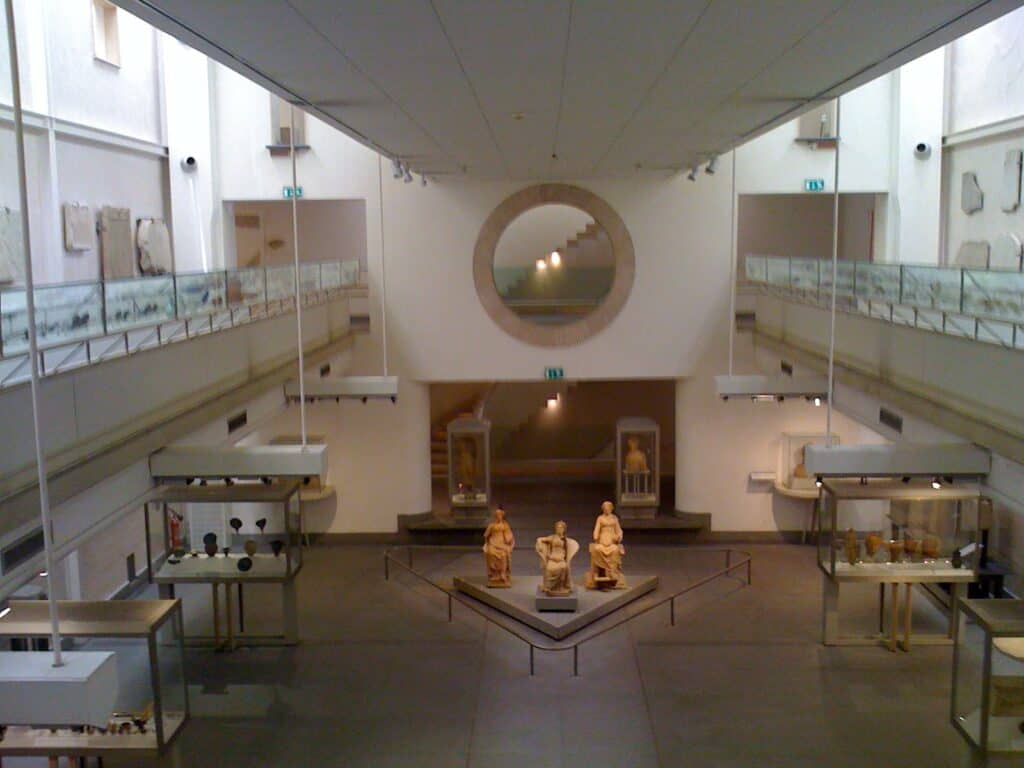
Even though just a tiny portion of the public bath complex is visible among the ruins, the facility is exceedingly spectacular. Additionally, visitors can examine the graves, which are exceptionally well kept.
Viewing the Basilica of Santa Maria Degli Angeli on Piazza della Repubblica, you may understand the tremendous magnitude of the baths.
Because of their immense size, the Baths of Diocletian now house two churches, a significant portion of a Carthusian monastery, as well as an important museum. The vast tepidarium, also known as hot baths, was used by Michelangelo as the shell for his church of Santa Maria Degli Angeli.
Another section of the Museo Nazionale Romano, Rome’s National Museum, is filled with treasures of antiquity, including Greek and Roman sculptures.
At some point in the late 16th century, the cathedral of San Bernardo Alle Terme was built in a dome near the baths.
Its dome is similar to the dome of the Pantheon, although it is only half as large.
Need more convincing to travel to Rome, Italy, right? Check out reasons to visit Rome, Italy, at least once in your lifetime here.

